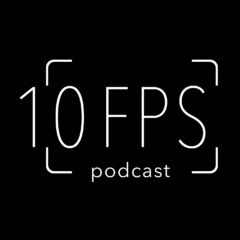Ethan Noah Roy’s Journey Through Photojournalism
📣 Why This Podcast Episode Matters
If you’re a budding photographer, a veteran storyteller, or simply curious about the gritty reality behind today’s headlines, the “10 Frames Per Second” episode featuring Ethan Noah Roy is a must‑listen.
- First‑hand insights from a Los Angeles‑based documentary photographer who’s covered wildfires, ICE raids, and political protests.
- Practical advice on self‑teaching, using on‑camera flash, and staying safe in high‑risk zones.
- Behind‑the‑scenes stories about working with legendary photojournalists such as Jim Javicek (Jim) and James Nachtwey.
🎙️ Meet Ethan Roy – LA’s Social‑Landscape Documentarian
Quick Bio
| Detail | Info |
|---|---|
| Base | Los Angeles, California |
| Publications | New York Magazine, The Washington Post, Wired |
| Mentors | Worked alongside Jim Javicek, Peter Lindbergh, James Nachtwey, and others |
| Specialties | Wildfires, ICE raids, political protests, sub‑cultural projects (e.g., “Bloodstained Men”) |
“I consider myself a bit self‑taught, learning on the job while assisting photographers.” – Ethan Roy
🛠️ How Ethan Got Started: Self‑Teaching & Early Influences
- Early exposure: A road‑trip road‑trip across the U.S. introduced him to Robert Adams’ tiny red book on homes and storefronts, sparking his love for documentary work.
- Assisting gigs: Started as a photo assistant for magazines (e.g., New York Times Magazine).
- Key inspirations:
- Matt Black’s “America Geography” – intimate, non‑exploitative poverty documentation.
- Gregory Halpern, Taron Simon, Sina Nasseri – modern flash‑driven aesthetics.
Takeaway for Aspiring Photographers
Start small. Assist on shoots, study photo books, and let curiosity drive you toward a personal style.
⚡ The Flash Revolution: Why On‑Camera Flash Became Ethan’s Signature
The Turning Point
- Found a discarded flash in Koreatown (covered in “gunk”).
- Repaired & paired it with his old Nikon.
- Inspired by the Gary Winogrand documentary – “available light is what you have in your bag.”
What the Flash Achieves
- Control in chaotic lighting (tear‑gas clouds, low‑light protests).
- Hyper‑real color that emphasizes the photographer’s emotional focus.
- Aesthetic continuity across news, feature, and sub‑cultural projects.
“Flash lets me shape the scene, especially when bright sun is blocked by buildings or when I’m dodging tear gas.” – Ethan Roy
📸 Covering the Front Lines: Notable Projects
1. Altadena Wildfires (2023)
- Personal connection: Ethan’s mother lives in Altadena; his stepdad fought the fire for five days.
- Observations: Residents felt ignored by mainstream media; the community’s resilience became a visual narrative.
2. ICE Raid on a Marijuana Farm (Camarillo)
- Challenges: Low‑light field, tear‑gas, SMGs, and an unexpected death the next day.
- Human moments: Families crying, volunteers offering food/water, a community in limbo.
3. “Bloodstained Men” Series
- Focus: Intactivist movement, aka “Make America Healthy Again,” linking MAGA ideology to fringe health sub‑cultures.
- Goal: Reveal the overlap between conspiracy‑driven wellness and extremist politics.
4. Protest Coverage (MAGA rallies, Black‑Lives‑Matter protests)
- Safety: Gas masks, flak jackets, and occasional gunfire.
- Technique: Off‑camera flash to add drama without compromising subject dignity.
✍️ From Photo to Text: Adding Narrative to Images
- Writing as an extension: Began documenting what the camera couldn’t capture—context, emotions, personal reflections.
- First big break: New York Magazine asked him to write about an ICE raid; the piece felt natural after years of field notes.
- Current focus: Combine images with concise storytelling for online platforms (e.g., podcasts, opinion pages).
🛡️ Safety Checklist for Photojournalists in High‑Risk Situations
| Gear | Why It Matters |
|---|---|
| Gas mask or respirator | Protects lungs from tear gas, smoke, and fire particulates. |
| Flak jacket / bullet‑proof vest | Reduces risk from stray rounds or projectile launchers. |
| Reliable flash (on‑camera or off‑camera) | Provides control when natural light fails; doubles as a deterrent. |
| First‑aid kit | Immediate treatment for shrapnel, cuts, or burns. |
| Backup batteries & memory cards | Ensures you don’t miss a critical shot. |
| Communication plan | Set check‑in times with a trusted contact. |
| Know local law enforcement protocols | Helps avoid unnecessary confrontations. |
Pro tip: When covering protests, avoid facial hair—tear‑gas can cling to it and cause respiratory issues.
📚 Recommended Reading & Resources
- Books
- “America Geography” – Matt Black
- “American Odyssey” – Mary Ellen Mark
- “The Innocence Project” – Taryn Simon
- Documentaries
- Online
- 10framespersecond.net – Podcast archives
- WLOY.org – Full episode recordings
🚀 How to Start Your Own Photojournalism Journey
- Grab a camera – Even a modest DSLR works.
- Find a local story – Neighborhood protests, community events, or natural disasters.
- Assist experienced photographers – Learn lighting, composition, and ethics on the job.
- Experiment with flash – Start with an inexpensive on‑camera flash; practice shaping light.
- Write a short caption for each image; slowly expand to longer narratives.
- Publish – Use social platforms, personal blogs, or submit to local news outlets.
🎉 Final Thoughts
Ethan Roy’s conversation on the “10 Frames Per Second” podcast sheds light on the raw, human side of photojournalism—from mastering flash to navigating dangerous terrain, and from self‑education to storytelling.
Whether you’re an aspiring photographer or a seasoned visual storyteller, the episode offers a roadmap to authentic, impactful work that doesn’t just capture images but also preserves truth.
Stay curious, stay safe, and keep shooting.
Podcast: Play in new window | Download
Subscribe on your preferred platform! Apple Podcasts | Spotify | Amazon Music | Android | Pandora | iHeartRadio | JioSaavn | Podchaser | Gaana | TuneIn | Deezer | Anghami | Youtube Music | RSS
